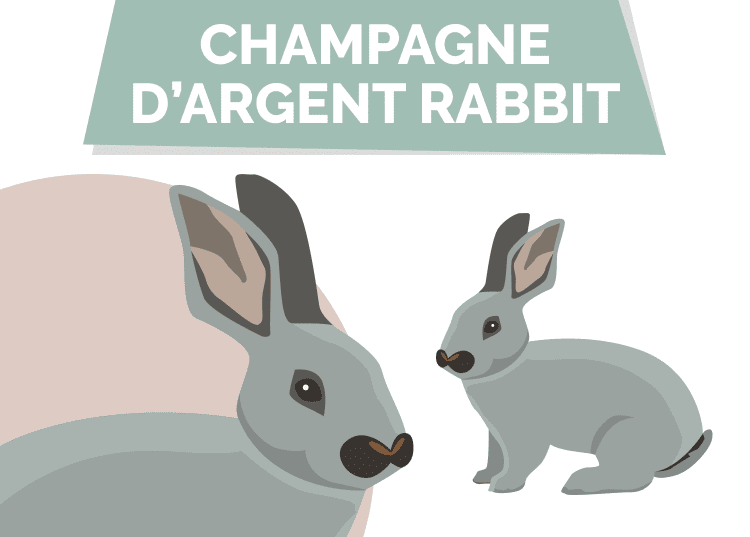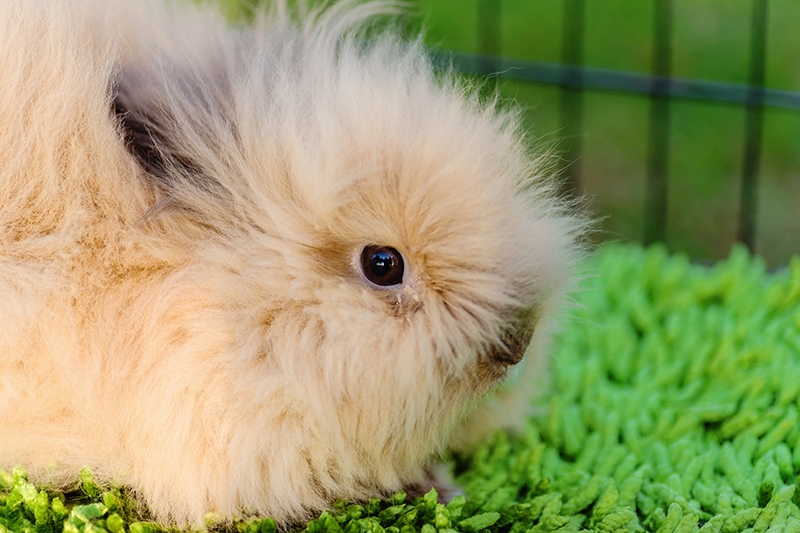30 Beautiful Show Rabbit Breeds (With Pictures)
By Beth Crane
Updated on

Rabbits are very popular in the US, with at least 1.5 million households owning one.1 They have a big fan club that goes back many years; the founding of the American Rabbit Breeders Association (ARBA) in 1921 shows the country’s love for rabbits in all shapes and sizes. The ARBA hosts dedicated rabbit shows nationwide every year, with over 50 breeds accepted for show status.
In this article, we’ll look at 30 of these US breeds in more detail. We also added a few interesting breeds that are accepted in the UK (where the love for rabbits is even more apparent) by the British Rabbit Council that are not accepted in the US.
The 30 Show Rabbit Breeds
Breeds Recognized for Show Status by the American Rabbit Breeds Association
1. American

This breed is a rare one and is listed by the Livestock Conservancy as “critical.”
Recognized by the American Rabbit Breeder’s Association (ARBA) in 1917, the American has a sweet and docile temperament, which makes it an attractive pet. The American rabbit was once incredibly popular, having been kept for fur and meat until the 1950s. However, once more breeds that better served these purposes (like the Californian) were introduced, the breed faded into obscurity.
2. American Chinchilla
The American Chinchilla was first shown in France in April of 1913, with the breed traveling around England and finally landing in New York in 1919. They are considered a heritage breed by the Livestock Conservancy and are now critically endangered. The American Chinchilla is intelligent and calm and is renowned for its friendly temperament. That is why they are slowly making a comeback as a popular pet rabbit and show bunny!
3. American Fuzzy Lop
The American Fuzzy Lop is instantly recognizable as a bundle of fluff with two floppy ears poking out. These sweet rabbits are beautiful in looks and temperament, with easy-going and energetic personalities. This makes the American Fuzzy Lop a popular choice for many first-time rabbit keepers, but be aware that their fur needs regular grooming to keep it tangle-free. For that reason, the American Fuzzy Lop may better suit more seasoned rabbit owners.
4. American Sable
The American Sable was derived from the American Chinchilla rabbit and shares its warm and friendly temperament. These rabbits aren’t too big or small, so they suit owners with children old enough to correctly and respectfully handle them. In addition, American Sables are known to enjoy interaction with their owners and are sociable, so they make good pets for families.
5. Argente Brun
The Argente Brun is another rabbit recognized as a heritage breed by The Livestock Conservancy and was first brought to the United States from France in the early 20th century. These rabbits have beautiful coats with a rich chocolate brown color underneath silvery frosted guard hair. This gorgeous coat and the breed’s friendly temperament make them popular show pets. However, these rabbits can be willful, so they must be socialized correctly from a young age.
6. Belgian Hare
This striking rabbit breed is one of the oldest, having roots in the US in the 1800s. They look incredibly similar to wild Hares related to rabbits, but they are simply normal rabbits bred to resemble their larger lagomorph cousins. The Belgian Hare is flighty and nervous in temperament, but they enjoy being petted by their owners. Because of their long and lean body, they are known to injure themselves when startled; quiet homes without children or other pets may be better suited to Belgian Hares.
7. Beveren
The Beveren is an old breed that arrived in America from the UK in 1915. These rabbits are medium-large (weighing around eight to 12 pounds) and are docile, making them a good choice for novice keepers who want a hardy rabbit that’s easy to train and bond with.
8. Blanc de Hotot

These striking bunnies are another rarity, making them harder to find if you want to keep one. Blanc de Hotots make excellent pets and are gentle and friendly. They’re instantly recognizable due to their striking white coats with black “eyeliner” markings, so you can be sure they’ll stand out from the crowd! There are different sizes of Blanc de Hotot, but the standard version is medium in size.
9. Britannia Pettite (Polish)
The Britannia petite, or the Polish in the UK, is one of the smallest breeds recognized for show. These tiny bunnies weigh up to 2 ½ pounds, but their adorable statures are paired with a high-energy, highly strung, and flighty temperament. These are not rabbits for the faint of heart! Because of their nervousness and tiny size, we wouldn’t recommend that families with children adopt a Britannia Petite due to the risk of injury.
10. Californian
These pretty rabbits were developed in California in the 1920s. Californians are large rabbits and weigh between 8 and 10 pounds when fully grown. Because of their manageable size and calm demeanor, they’re an excellent choice for families who want a loving pet. The Californian is known for being affectionate and gentle and is a popular choice for rabbit enthusiasts.
11. Champagne d’Argent
These somewhat famous rabbits are some of the oldest, with roots dating back to 17th-century France. Champagne d’Argents are pretty rabbits with smokey, silvery fur and ears held upright. They are hardy and docile and are happy to spend time with other pets and people if they are properly socialized when they’re young.
12. Checkered Giant
These behemoths genuinely live up to their name, with no maximum weight for them being given on ARBA’s website. The Checkered Giant was introduced into America in 1910, and they instantly gained popularity due to their size and strikingly patterned coats.
Unlike other massive rabbits, Checkered Giants are slim and very energetic. They need lots of room for running since that is what they do best, and owners that live in apartments may not be suitable.
13. Cinnamon
The Cinnamon rabbit was recently developed as breeds go. It was accidentally created in the US in the 1960s and slowly gained popularity, but it has yet to achieve the levels of other rabbits, such as the Californian. Cinnamon rabbits are medium in size and docile in temperament, making them good for families who want a relaxed and easygoing rabbit that still has the “wow” factor.
14. Creme d’Argent
The Creme d’Argent is one of the rarest rabbit breeds in the world; it was practically extinct except in the US and the UK. They have beautiful and unusual fur, with an undercoat of fiery orange and cream white. Because of their rarity, they’re very difficult to find (and expensive to buy!). However, they are very likable and relaxed, which makes them a good choice for beginner rabbit keepers.
15. Dutch

From the rarest rabbit to one of the most recognizable and beloved, the Dutch rabbit is incredibly popular. It is one of the top ten favorite rabbits in the US and has a very easygoing temperament that makes it suitable for families with children. They are gentle and responsive to respectful handling, so new rabbit owners should consider a Dutch as their first choice.
16. Dwarf Hotot

The tiny Dwarf Hotot is another miniature that only weighs 3 pounds. It is adorable and is a perfectly miniaturized version of the Blanc de Hotot (complete with markings). They used to be considered more aggressive than other breeds, but that was found to be false. The key is to respect their small size and specific needs as rabbits, which could mean that families with small children might not be the best match for the Dwarf Hotot.
- See Also: How Much Do Dwarf Hotot Rabbits Cost?
17. Dwarf Papillon
Another of the dwarf breeds, the Dwarf Papillon, is a small but still beautifully decorated version of the Checkered Giant and Papillon breeds. They share many of the same traits and are energetic and playful with their owners. They are small, however, so families with small children may wish to find a larger, more easily handled rabbit (like the Papillon).
18. English Spot

The English Spot was developed in England during the 19th century and was admired for its athletic build and spotted coat. These lively rabbits are incredibly energetic, making them interesting pets to watch but tricky ones to manage! Their high energy levels mean they need lots of space to run in, and owners with large properties are ideal English Spot pet parents.
- Related Read: How Much Do English Spot Rabbits Cost?
19. English Lop
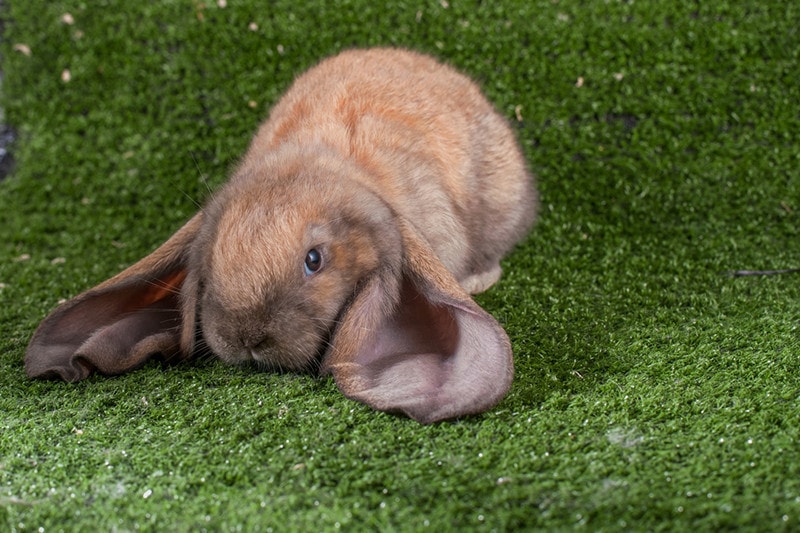
The English Lops have the longest ears of any known rabbit breed, which often drag along the floor as they move. These bunnies were first created in Victorian England and were bred as a companion species, and their temperament is described as truly “dog-like. They are calm and gentle and love to be around their families (if properly socialized). Despite their amazing temperament, English Lop owners should be prepared to keep on top of ear care, as their long ears can cause medical problems.
20. English Angora

The English Angora is a showstopping breed. It has long fur that hangs from its body in a beautiful powder puff, but all that hair needs daily management from its owner. English Angora owners must help their bunnies with extensive daily grooming, which can be off-putting to some. However, these rabbits are known to have an easygoing and sociable temperament, which should make those grooming sessions easier!
21. Flemish Giant
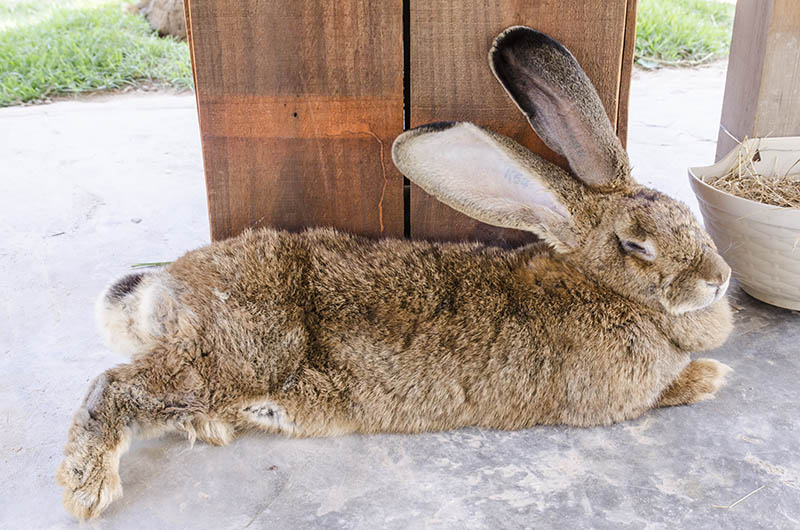
Flemish Giants are the biggest rabbits around, often weighing more than 20 pounds and growing to 4 feet long! They are considered gentle giants due to their relaxed personalities. They make exceptionally good pets and are often “house rabbits” that become beloved parts of the family. However, because of their size, the Flemish Giant needs lots of space to move around and live comfortably.
22. French Lop
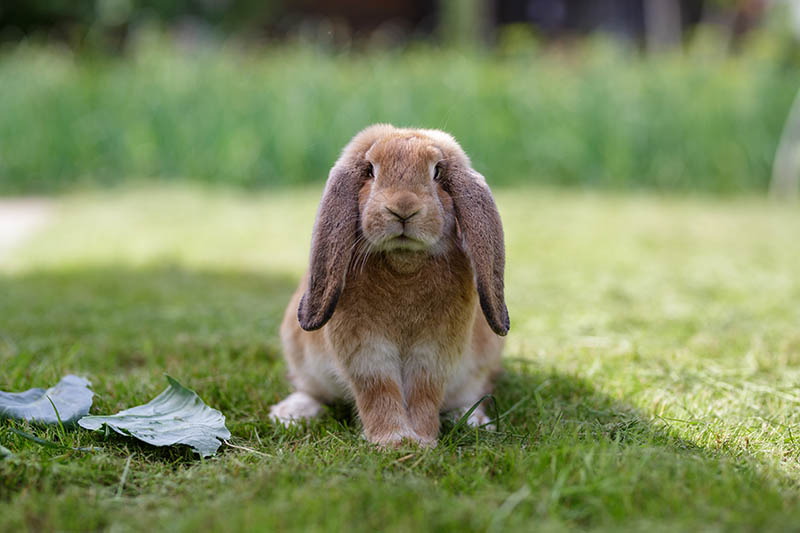
The French Lop is a large, heavy, and sturdy rabbit that burrows its lop ears from the English Lop and size from the Giant Papillon. French Lops are docile rabbits, making them an excellent choice to have as a pet. They can also be easier to handle for children due to their size, but like almost all rabbits, they don’t like being picked up off the ground.
23. Florida White

These easily recognizable rabbits are the quintessential “lab rabbits,” with snow-white fur and red eyes caused by albinism. Florida Whites are stereotypically adorable, with upright ears and pink noses. They are popular for showing in America on account of their pure white fur and easy-going, calm temperament. They’re gentle, too, making them ideal pets for first-time rabbit owners.
24. French Angora
The French Angora looks like a rabbit wrapped in a cotton ball, as they have no fluffy fur on their faces or ears but a hugely fluffy body! They are gorgeous, soft, and smaller than some breeds but gentle. They need daily grooming to prevent painful and debilitating matting.
25. Giant Angora
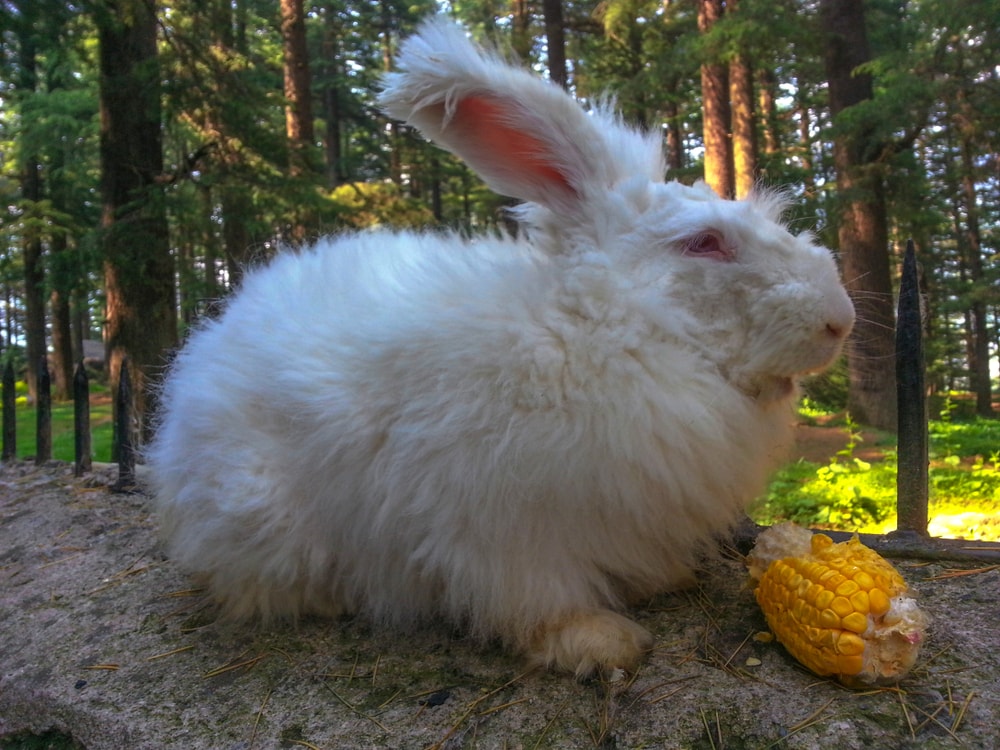
If you thought the French or English Angoras were fluffy, wait until you see the Giant Angora! These enormous balls of fluff are the biggest of all Angora types and weigh at least 9 ½ pounds. They have dense fur all over, from the tassels on their ears to their furry tails. They are difficult rabbits to keep, as they don’t shed their fur. Giant Angoras must be groomed daily and shorn regularly to prevent fur overgrowth and tangling, so an experienced rabbit keeper is the best match for them.
26. Giant Chinchilla
The Giant Chinchilla is the “million-dollar rabbit” that earned its founder a record amount of money (a million dollars). These gentle and charming rabbits are supersized versions of the Chinchilla rabbit breed, which can make them a good choice for families with children. They’re mild-mannered, but their size can make them trickier to handle, so only allow children to handle them with supervision.
27. Holland Lop

These tiny rabbits are the smallest of the Lops, weighing a maximum of 4 pounds and having the sweetest faces. Holland Lops are very small, so they aren’t suitable for families with young children who could accidentally hurt them. However, their sprightly and friendly personalities make them very popular pets.
Breeds Recognized for Show Status by the British Rabbit Council
28. Alaska
The Alaska is a gentle breed first developed in Germany (despite the name) in 1900. They only come in one color (black) and have short but glossy fur. They are registered with the British Rabbit Council (BRC) but were never accepted by the ARBA as they gained little attention when introduced into America in the 1970s. The BRC classifies them as a “fur” type.
29. Blanc De Bouscat

Also known as the Ermine rabbit, the Blanc De Bouscat is a popular species in France. They are large rabbits known for their gentle dispositions. Their friendly personalities are due to the breed’s origins, as the famously relaxed Flemish Giant was one of the founding breeds mixed to form the Blanc De Bouscat. They are rare rabbits and unlikely to be seen outside France.
30. Cashmere Lop

Cashmere Lops are popular in the UK and were bred for their smooth, silky fur and friendly demeanor. They have an amazing array of colors and patterns! They are hardy rabbits, making them ideal for first-time rabbit owners. They’re also bred to be pets and are suitable for families who want an even-tempered rabbit.
When Were Rabbits First Domesticated?
There is some speculation about when we first domesticated fluffy bunnies, but there is evidence that we kept rabbits during Roman times and in the Middle Ages. We know that rabbits were transported for food across Europe in the Middle Ages and that Romans were the first to use hutches for their rabbits. But what about pet rabbits?
In Victorian England in the 1800s, people began to pamper their rabbits enough that skeletal changes started to occur, which changed them from wild rabbits to domesticated ones. From there, rabbit ownership grew into what we know today.
When Were Rabbits First Shown in America?
The first organized rabbit show in America was put together by a group of rabbit fanciers that formed the American Rabbit Breeds Association (ARBA) in 1921. Many shows have traveled around the country ever since. However, in the UK, the British Rabbit Council (BRC) has been showing rabbits for more than 200 years, with the first breed club (the Beveren breed) beginning in 1914.
 Conclusion
Conclusion
Many show breeds have been displayed for their beauty for over 200 years, and there are over 50 breeds shown in the US and even more in the UK. Some of these rabbits make a lasting impression on the show table, while others are beloved for their friendly temperaments. Whether you’re looking for an enormous bunny or a tiny rabbit, you have several choices when determining which species will best fit your family.
- See Also: What Breed Is My Rabbit? Facts & Tips
Featured Image Credit: Leena Robinson, Shutterstock



